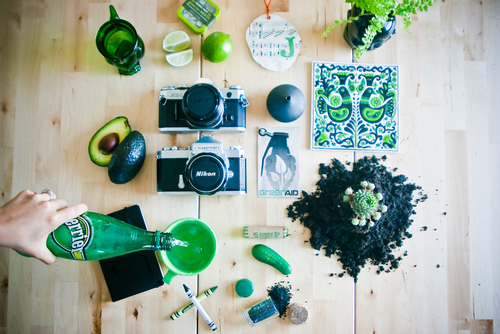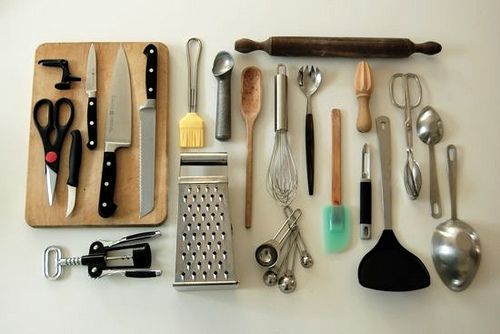This week I declutter my “sentimentals” and my “collectibles”
What did we all do before we “decluttered”? We tidied. We picked up our crap, dusted under it, then put it back down again. We also used our crap. In my house we collected toothbrushes, icecream buckets and old singlets, which were used for cleaning our BMXs (the hub ballbearings would soak in kero in the buckets, the toothbrushes and rags were for extracting crud from the chain). And Dad used the old inner-tyre tubes for just about everything – fixing fences, espaliering the tomatoes and occy-strapping things to the ute.
Nowadays we buy more new stuff, and we don’t have time to get creative with re-using the old stuff. So we have more crap. And less room. But more importantly we’ve developed a raging intolerance for this clutter and a need to clear our lives of everything that could be bogging us down, physically, emotionally or spiritually. Decluttering has become a euphemism for the enema we’d like to take to our relationships, our schedules, the floors of our cars. In the US “storage solution” stores are experiencing exponential growth, while hoarding memoirs are emerging as the new “mis lit”. I tell you, decluttering is a dirty big business.
In this column I’ve subjected myself to many declutterings, consulting some of the world’s experts on the subject. I’ve overhauled my book collection, my email inbox; heck, I even did a colonic. But this week I went the next level. I decluttered my “sentimentals” – photos, heirloomy knick-knacks, my grandmothers’ Jesus statues and the box of school certificates I’ve kept since kindergarten (for “good book work” and “trying hard during health hustle”).
Which is how Peter Walsh ended up in my loungeroom on Tuesday morning. Walsh (originally an Australian) is Oprah’s declutter guy. He’s the Jamie Durie of the clean sweep and gets excited on Oprah’s couch regularly about filing systems and label makers. This week, however, he visited my apartment and made it quite clear: clutter is clutter no matter how long it’s been in the family.
Walsh is brimful of sound-bitey tips. That second drawer down in the kitchen? Empty it into a bucket. Over the next month, as you use an item, return it to the drawer. At the end of a month, anything that’s still unused in the bucket, toss. I also like this gem for dealing with the junk that accumulates from grandparents buying your kids too many toys – set up a university fund and invite them to inject funds there instead (too bad Nan won’t be around to enjoy the fruits).
But to me and my knick-knacks. “When we start talking heirlooms,” Walsh says, “that’s when the excuses come out.” Oh really? But, seriously, my school certificates have sentimental value. Walsh has some distinct takes on this. “What, in your past, are you trying to hang on to?” he asks. Um, well, acknowledgment for my achievements? Is it the memory or the object you can’t let go of? He also questions how important something is to me if it’s stored in a dusty old box that I haven’t opened in four years. Which is the best point made to me all week.
The Jesus statues and iconography, displayed on a kitsch shrine made from a toy ironingboard, get a nod of approval. “If you display your heirlooms in designated zones, and you enjoy looking at them and showing others, it shows you value and honour the memory or the heritage,” he says. The rest is dead energy.
He also likes the way I’ve framed pictures my brother Nick used to paint for me. His tip for kids artwork is snappy: file it in a folder and at the end of each term get your prodigy to pick three favourite masterpieces. Frame them. Then replace each term with the next crop of masterpieces.
But, what if I’m keeping my crap to show the children and grandchildren… which is kind of why I seem to keep all my sentimentals, including my Yr 10 formal dress and poetry journal from when I was 15. Actually, I can answer this one myself: will they really care? Walsh’s advice is a little gentler. He suggests “remembering without saving”. “Reflect on the memory, be aware of the bit that matters to you. Then proactively honour it.” So, clip some fabric from the dress you wore when you met your husband and turn it into a cushion. Or whatever. “Own the memory,” he says.
Or, as they say in Fight Club, “The things you own end up owning you”.
Do you have tips that out-organise Pete? Share them! And I’ll get Pete to check them out.



